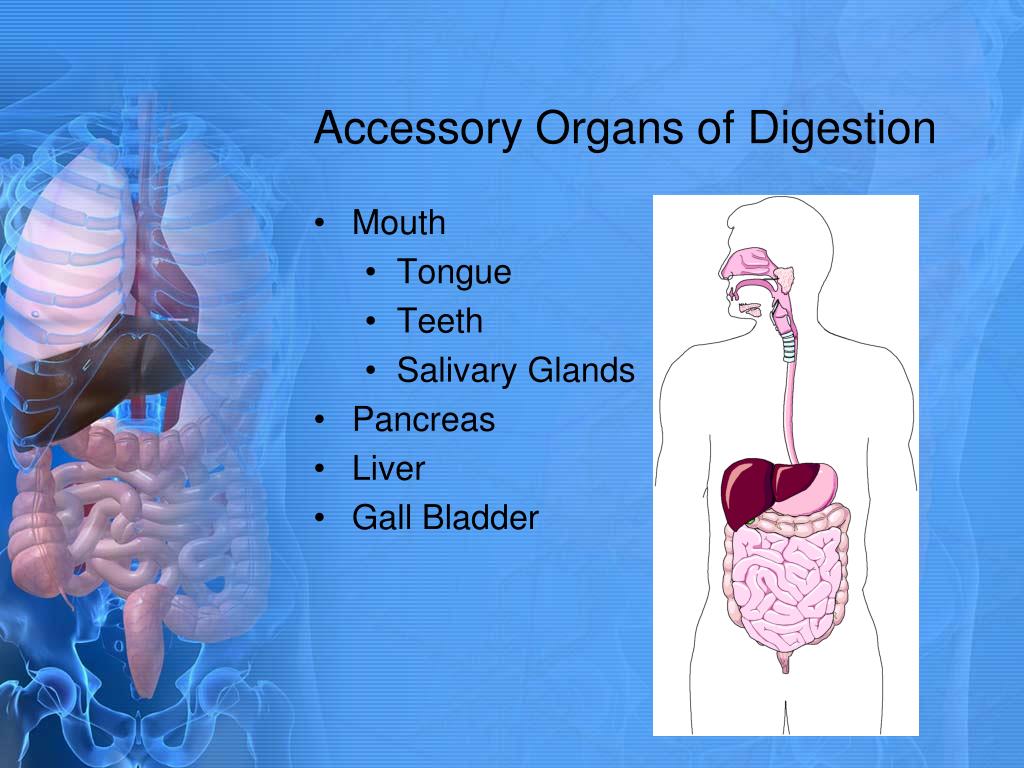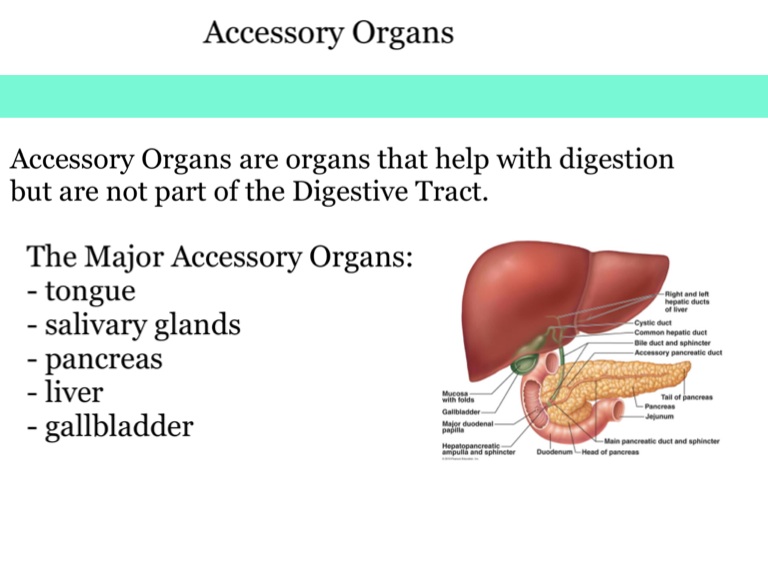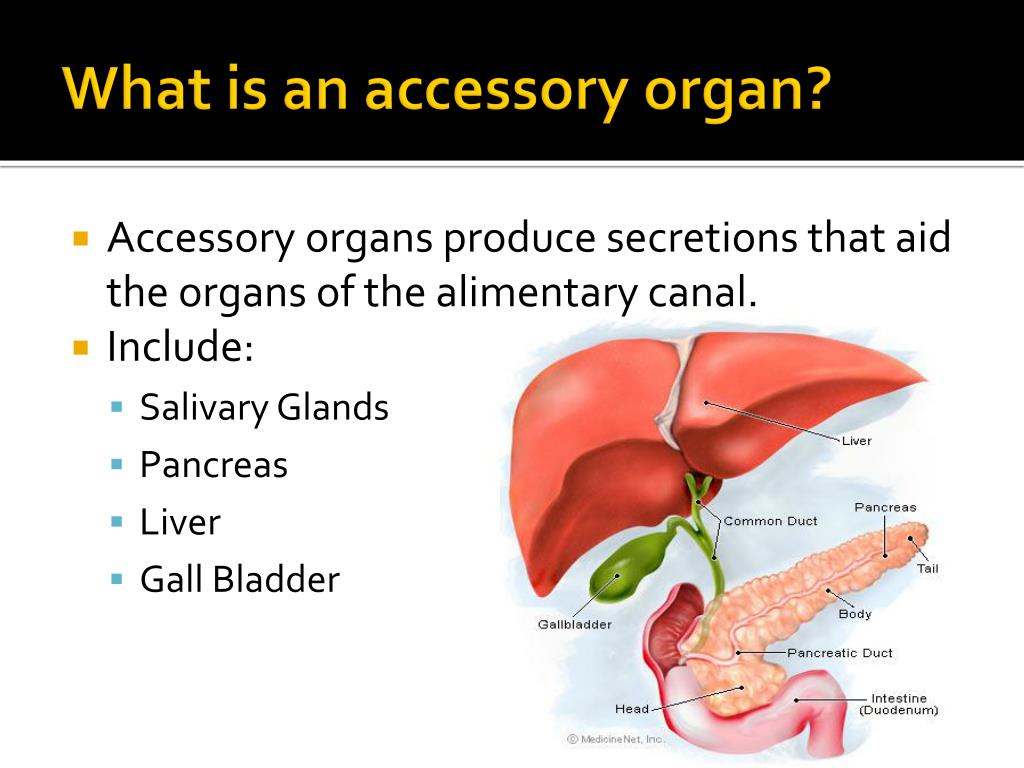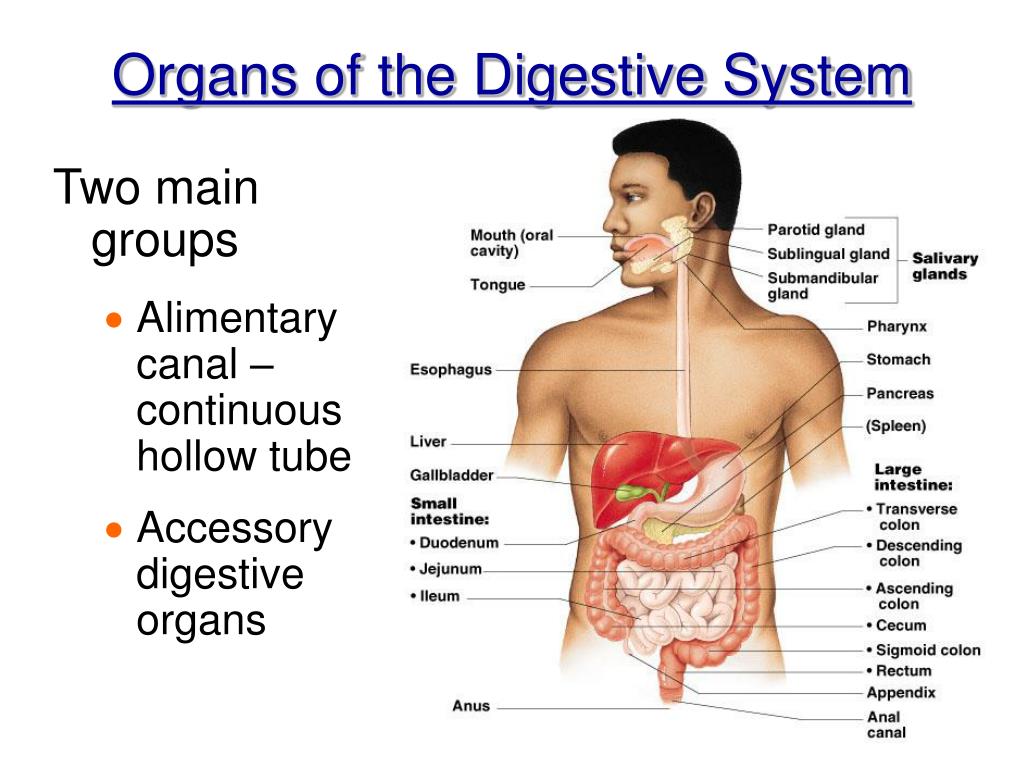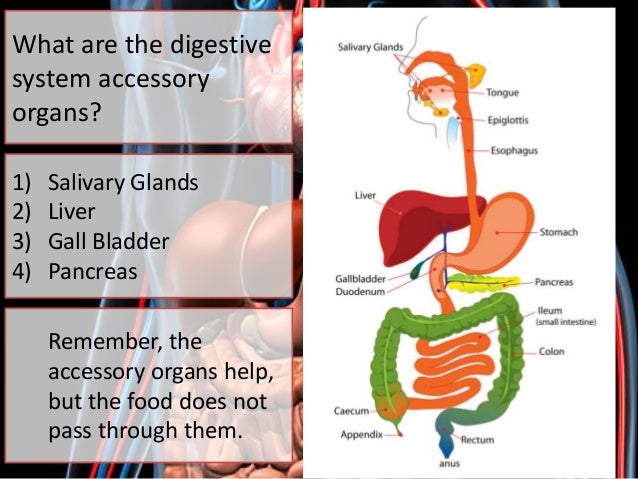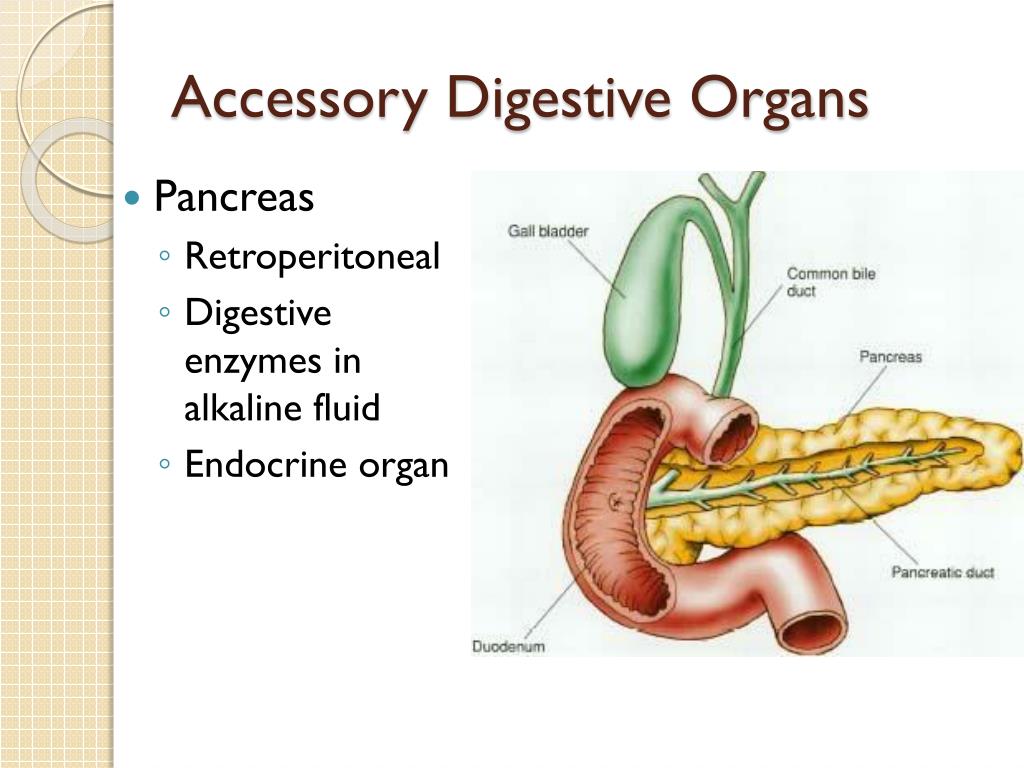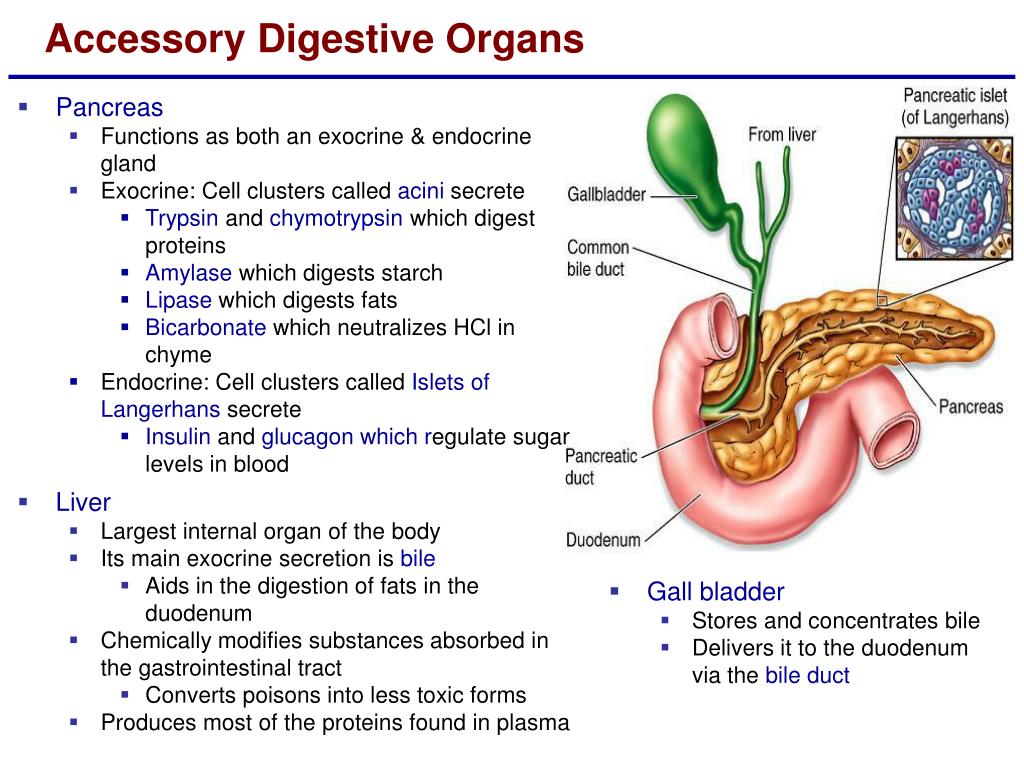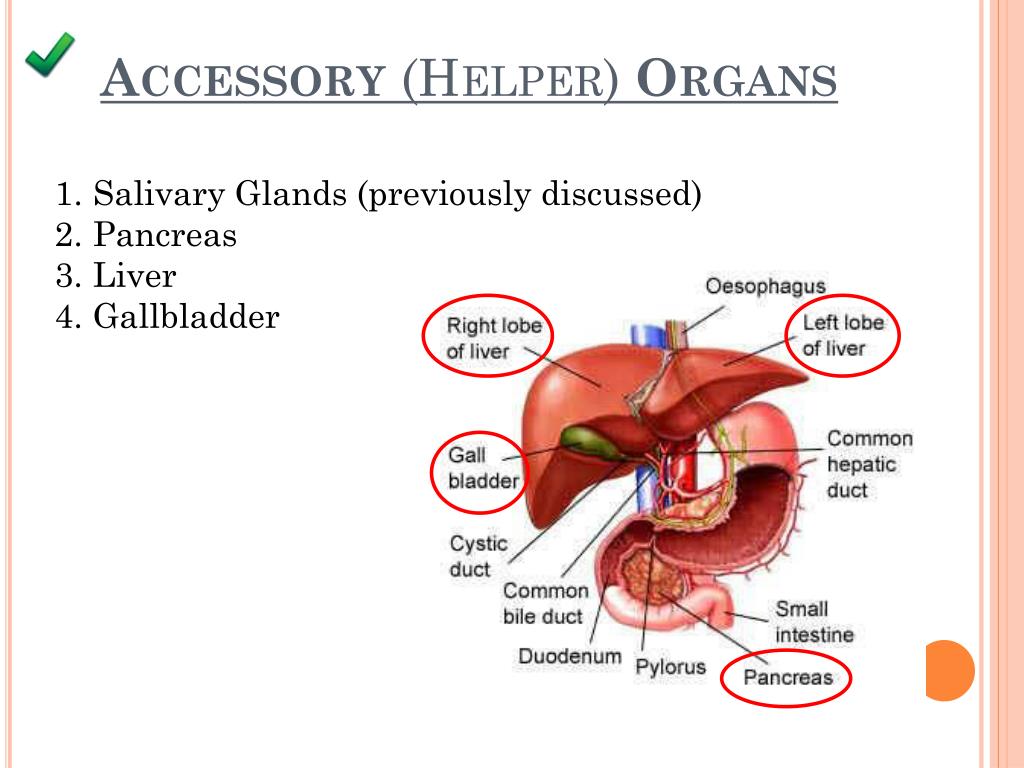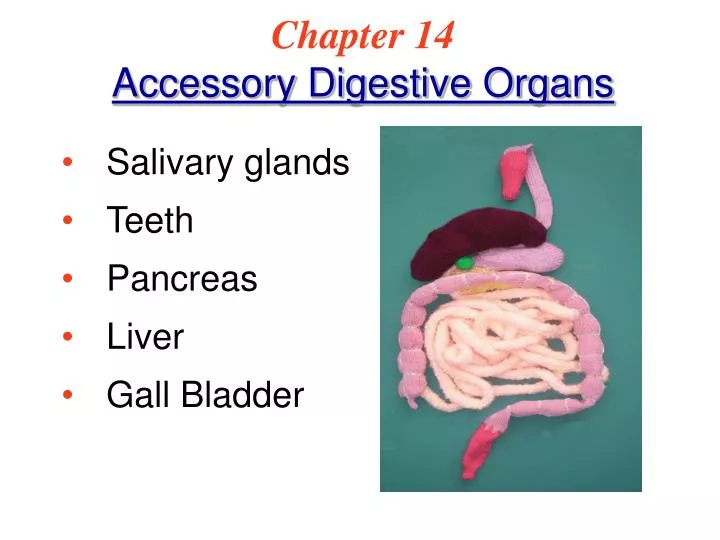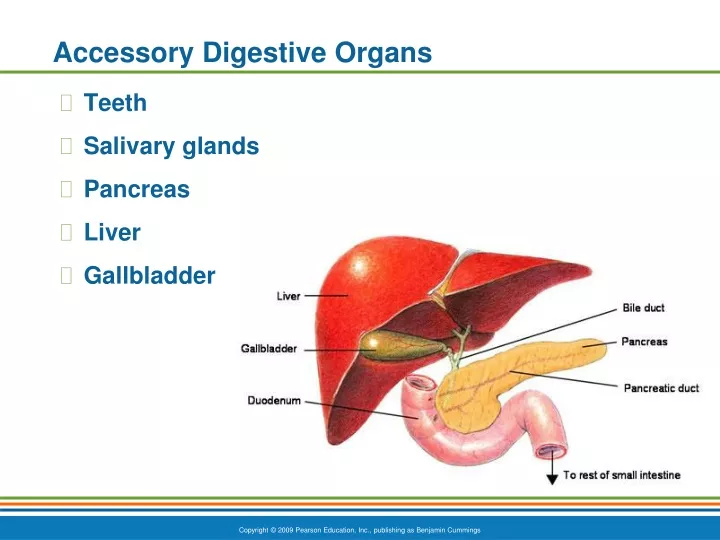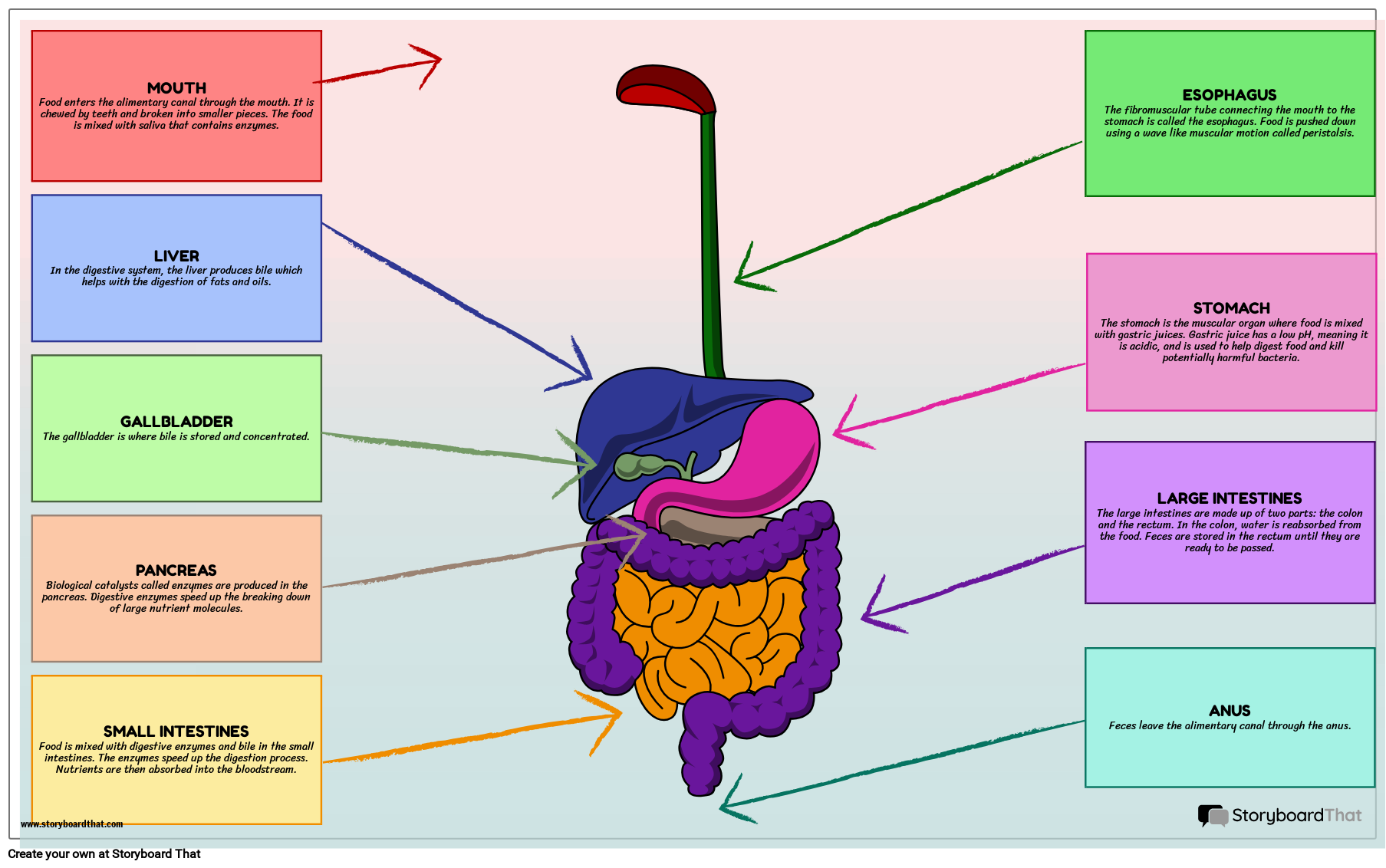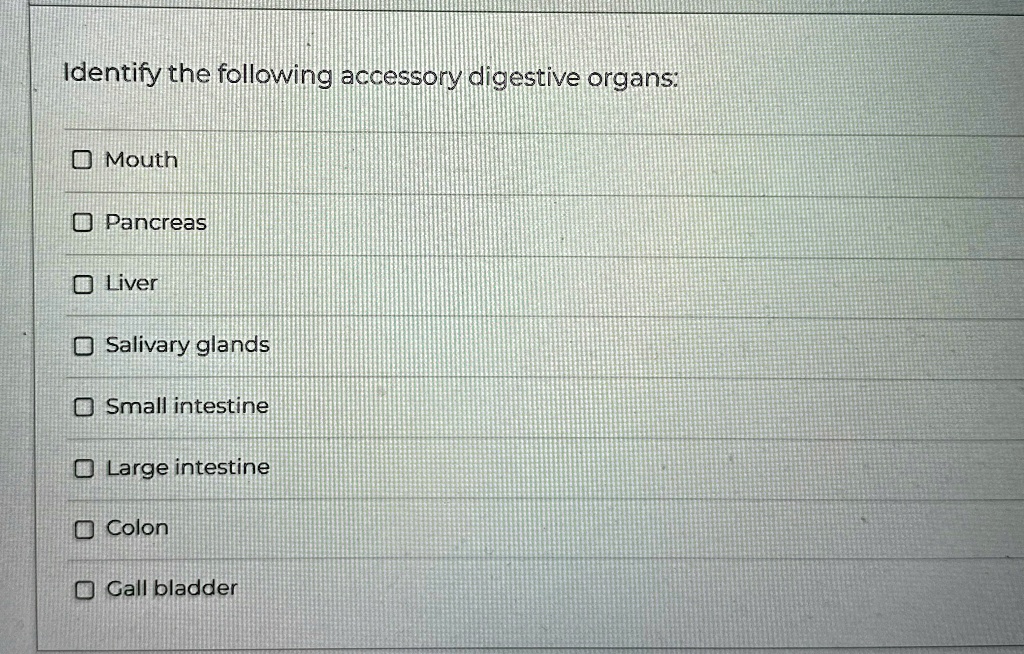Which Of The Following Is An Accessory Digestive Organ
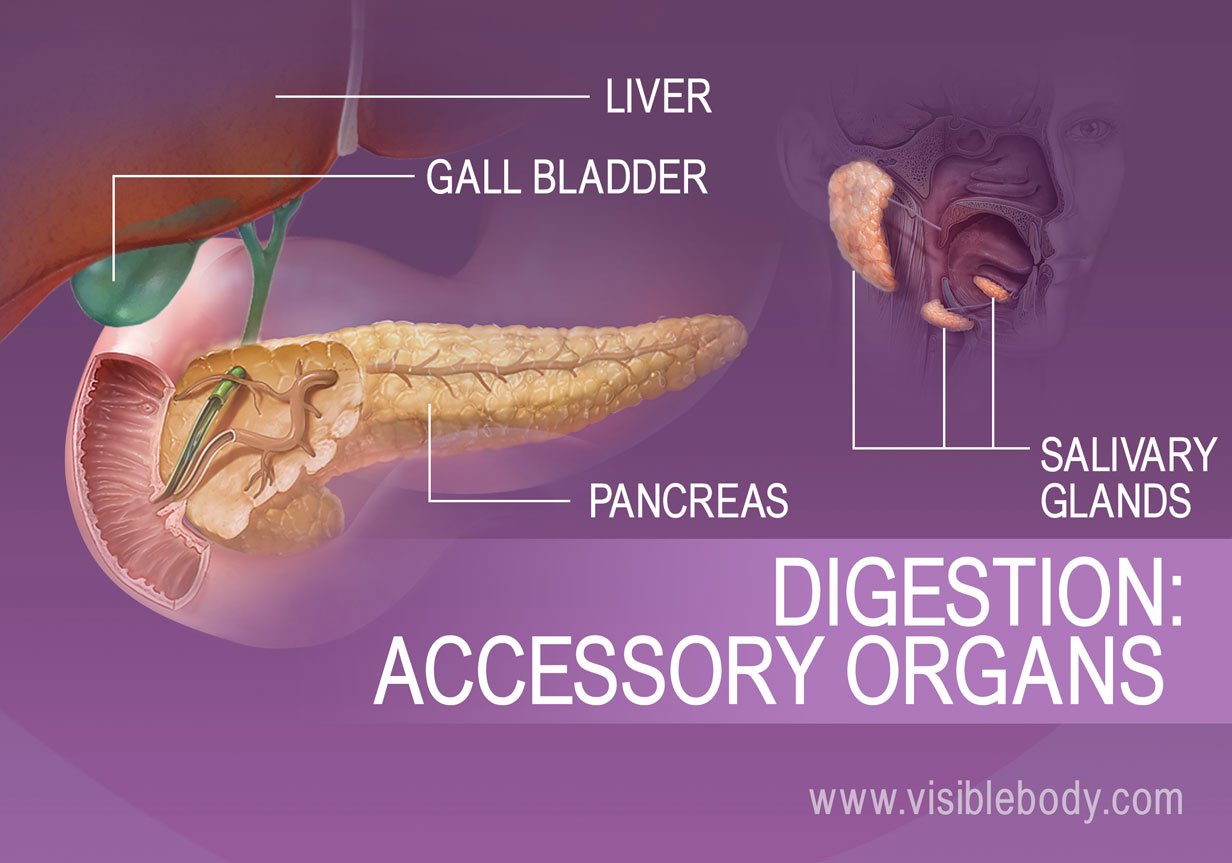
The human digestive system, a complex network responsible for breaking down food and absorbing vital nutrients, is often understood through its primary organs. However, a crucial, often overlooked, set of organs plays an indispensable supporting role. Understanding the function and importance of these accessory digestive organs is paramount for grasping the full picture of human nutrition and overall health.
This article will delve into the question: "Which of the following is an accessory digestive organ?" We will explore the specific roles of the liver, pancreas, gallbladder, and salivary glands, clarifying their functions alongside the main digestive tract. This investigation highlights the necessity of these organs for digestion but also illuminates their vulnerability to disease and the strategies for maintaining their health.
Defining Accessory Digestive Organs
Accessory digestive organs are those that contribute to the digestive process but are not part of the continuous digestive tract. They secrete enzymes, hormones, and other substances that aid in breaking down food.
Unlike the stomach or intestines, food does not pass directly through them. Instead, they channel their secretions into the digestive tract via ducts.
The Liver: A Metabolic Powerhouse
The liver, the largest internal organ, performs a multitude of critical functions, including bile production. Bile, a yellowish-green fluid, emulsifies fats, breaking them down into smaller droplets for easier absorption in the small intestine.
Beyond bile production, the liver also filters blood from the digestive tract before it reaches the rest of the body. It metabolizes drugs and toxins, stores glycogen (a form of glucose), and synthesizes essential proteins.
Liver diseases, such as cirrhosis and hepatitis, can severely impair its ability to perform these functions, leading to significant health consequences. A healthy diet and limiting alcohol consumption are crucial for liver health.
The Pancreas: Enzyme and Hormone Hub
The pancreas serves a dual role as both an endocrine and exocrine gland. Its exocrine function is vital for digestion, producing enzymes that break down carbohydrates, proteins, and fats in the small intestine.
These pancreatic enzymes, including amylase, protease (like trypsin and chymotrypsin), and lipase, are secreted into the duodenum through the pancreatic duct. In its endocrine role, the pancreas produces hormones like insulin and glucagon, which regulate blood sugar levels.
Pancreatitis, an inflammation of the pancreas, can be triggered by gallstones or excessive alcohol consumption, disrupting both digestive and hormonal functions. Careful management of diet and lifestyle is essential for preventing pancreatic issues.
The Gallbladder: Bile Storage and Concentration
The gallbladder, a small, pear-shaped organ located beneath the liver, serves as a storage reservoir for bile. It concentrates bile produced by the liver, increasing its effectiveness in fat emulsification.
When fatty foods enter the small intestine, the gallbladder contracts, releasing bile into the duodenum through the common bile duct. Gallstones, hardened deposits of cholesterol or bilirubin, can obstruct the bile ducts, causing pain and inflammation.
Surgical removal of the gallbladder (cholecystectomy) is a common treatment for gallstones, although it can sometimes lead to digestive issues due to the lack of bile storage.
The Salivary Glands: Initial Digestion
The salivary glands, located in the mouth, secrete saliva, a fluid that moistens food and begins the digestive process. Saliva contains enzymes, like amylase, that start breaking down carbohydrates.
Saliva also lubricates food, making it easier to swallow, and contains antibodies that help protect against oral infections. There are three major pairs of salivary glands: parotid, submandibular, and sublingual.
Conditions such as dry mouth (xerostomia) can impair salivary gland function, leading to difficulty swallowing and increased risk of tooth decay. Maintaining good oral hygiene and staying hydrated are important for healthy salivary glands.
Answering the Question: Accessory Organ Identification
Based on the information above, all of the organs described - liver, pancreas, gallbladder, and salivary glands - fit the definition of accessory digestive organs. They all contribute crucial digestive substances without food passing through them directly.
The liver and pancreas secrete enzymes and other substances into the duodenum, while the gallbladder stores and concentrates bile. The salivary glands begin the digestive process in the mouth.
Why Understanding Accessory Organs Matters
Awareness of the accessory digestive organs is crucial for understanding the interconnectedness of the digestive system. Problems in these organs can have widespread effects on digestion and overall health.
For instance, liver disease can impair nutrient absorption, while pancreatic insufficiency can lead to malabsorption of fats and other nutrients. This knowledge can empower individuals to make informed choices about diet and lifestyle, potentially preventing digestive disorders and enhancing quality of life.
The Future of Digestive Health
Ongoing research continues to refine our understanding of the accessory digestive organs and their impact on health. Advances in diagnostic techniques and treatments are improving outcomes for individuals with digestive disorders.
Personalized nutrition, tailored to individual needs and genetic predispositions, holds promise for optimizing digestive health. Future interventions may focus on preventing disease through early detection and targeted therapies.
Ultimately, a comprehensive understanding of the digestive system, including its often-overlooked accessory organs, is essential for promoting health and preventing disease.
